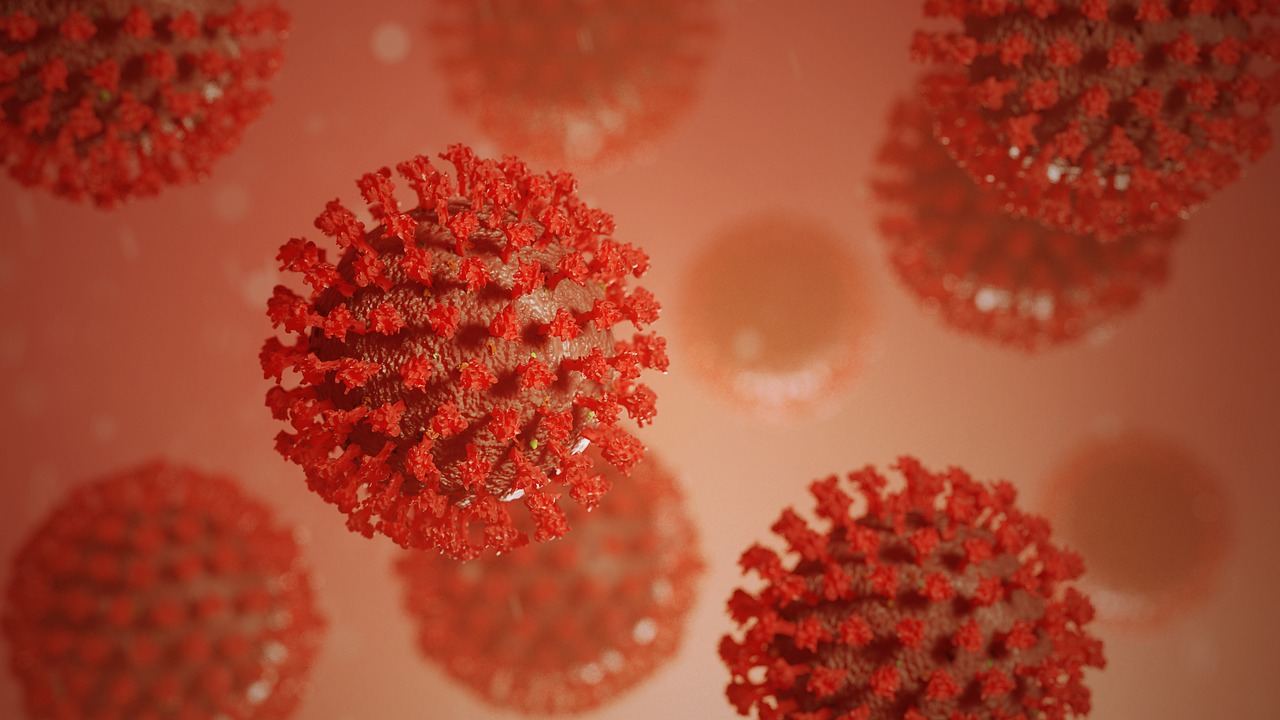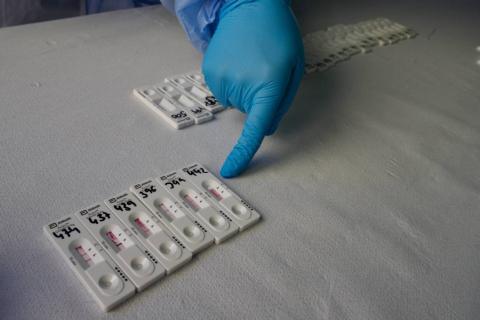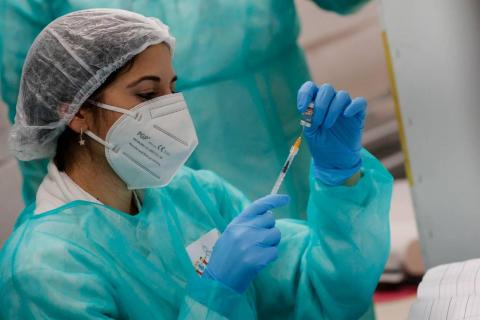Reaction: three new recombinant SARS-CoV-2 variants detected
The UK Health Security Agency published in its latest report on 25 March the detection of three recombinant forms of omicron, called XE, XD and XF. The WHO mentions them in its 29 March report, noting that the possibility that XE is more transmissible than BA.2 still requires further study.

Pixabay.
Iñaki Comas - XD
Iñaki Comas
Coordinator of the CSIC Global Health Platform and researcher at the Instituto de Biomedicina de Valencia (IBV-CSIC)
At present there is no evidence that the recombinant forms described have any characteristics different from those already known for BA.1 or BA.2, especially in terms of severity or vaccine effectiveness.
For one of them (XE) a possible increased transmissibility has been described in the UK, but the evidence is still weak. As we have learned earlier, we need to see the long-term behaviour to be able to estimate whether it will replace the dominant variant (BA.2). But above all we need to know the trajectory of this recombinant form in other countries where it is present. This comparative epidemiology will allow us to rule out local effects, as has happened in the past with other variants. None of these data (information on the long-term trajectory in the same country and the trajectory in other countries) are available.
On the other hand, XE maintains the genetic make-up that BA.2 has in the spicule protein, so it is to be expected that vaccine protection will not be fundamentally different from what we see now.
Finally, it is important to remember that the emergence of recombinant forms is not new, they have existed before and will continue to appear. They occur when two different variants infect the same individual at the same time, so it is to be expected that they will be more common in settings where the incidence is higher. This does not mean that it will have essentially different characteristics: it is just another way in which viruses generate variation. In fact, the WHO still classifies it as an omicron subvariant.
As with other variants and subvariants, what is needed is continuous surveillance of variants, recombinant and non-recombinant, and integration with epidemiological and clinical data to quickly make decisions if necessary. In that sense, with omicron we had a pretty clear idea of its characteristics in less than a month. This is the way forward in order to be able to stay ahead of the virus, should the need arise. At the moment, this does not seem to be the case for the recently described recombinant forms (pending more complete results).
María Iglesias - XD
María Iglesias-Caballero
Virologist at the Reference Laboratory for Influenza and Respiratory Viruses of the National Microbiology Centre - Carlos III Health Institute
One of the main characteristics of coronaviruses is their ability to recombine with other coronaviruses. We are now beginning to be able to distinguish these recombinations because the different variants that have coexisted in circulation are becoming more phylogenetically distant. To put it colloquially: they look less and less alike. This allows us to identify the parts of the genome that belong to different variants.
The XD lineage is a virus with an AY.4 delta genome that has acquired the spicule from the BA.1 omicron virus. The XF lineage is a BA.1 omicron virus that has a fragment in the polyprotein that regulates virus replication from the delta variant. The XE lineage has the previously mentioned omicron BA.1 variant polyprotein and the rest of its genome is BA.2 variant. Of these new lineages, the one with the most sequences published in GISAID is the XE lineage and it is the one that requires the most monitoring at the moment.
I would like to stress that these phenomena are not particular to SARS-CoV-2, but are frequent in these viruses. Their circulation is limited at the moment and we still need more data to know if they have any impact on the protection conferred by vaccines. Genomic surveillance allows researchers to monitor what is circulating and assess the impact it may have, but on a societal level I would not consider it a concern until more data is gathered.
Sonia Vázquez - XD
Sonia Vázquez-Morón
Researcher at the Reference Laboratory for Influenza and Respiratory Viruses at the Centro Nacional de Microbiología - Instituto de Salud Carlos III
The UK Health Security Agency's publication of the three recombinant forms of SARS-CoV-2 recombinants XE, XD and XF has made the emergence of recombinants more popular. However, they are not the only ones. A total of 17 Pangolin-designated recombinants are currently described: XA, XB and XC, which predate the recombinants included in that report and originated from recombination of the alpha variant and other lineages, but also other non variant-associated lineages.
The most recent ones described are XD and XF (delta and BA.1 recombinants); XE XG, XH, XJ, XK, XL and XN (BA.1 and BA.2 recombinants); XM, XP, XQ, XR (BA.1.1 and BA.2 recombinants) and XS (delta and BA.1.1 recombinant). The emergence of recombinants is not an isolated event, as it has been previously described in other viruses, including coronaviruses. It has been observed that these viruses are prone to evolve genetically by accumulating point mutations or swapping parts of their genome, so their emergence was to be expected, and even more so at a time of high prevalence of cases. Increased circulation can lead to an increase in the probability of being infected by two different viruses, a prerequisite for recombination to occur.
In this sense, and taking into account viral evolution, surveillance of SARS-CoV-2 is necessary to be able to detect any genetic changes, such as recombinations, that may be associated with changes at epidemiological level and require any intervention at public health level. However, the emergence of recombinant viruses does not necessarily imply a change in the behaviour of the virus compared to circulating viruses (parents of the recombinant). However, time and studies are needed to better understand the possible implications of these recombinations, as well as the possible establishment of one of the new viruses as the predominant virus, as we have seen previously.



